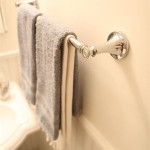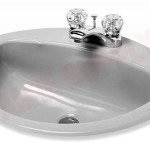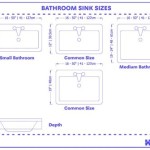How to Fix a Noisy Exhaust Fan in Your Bathroom
A noisy bathroom exhaust fan can be a constant annoyance, disrupting your peace and quiet. While a little noise is expected, if the fan is making a loud humming, rattling, grinding, or screeching sound, it's time to investigate the source of the problem. Fortunately, with a few basic tools and some troubleshooting techniques, you can often diagnose and address the issue yourself. This article will guide you through the common causes of a noisy bathroom fan and how to fix them.
1. Loose Components
One common culprit for noise is loose components within the fan itself. The fan blades, motor housing, or mounting screws can become loose over time, leading to vibrations and rattling. To address this, simply tighten any loose screws or bolts. Use a screwdriver or wrench to secure them, ensuring they are snug but not overly tightened. Check the fan blades for cracks or warps, and replace them if necessary.
2. Motor Bearing Issues
If the noise sounds like a grinding or screeching sound, the fan's motor bearings may be worn out. Motor bearings are small, metal balls that allow the motor shaft to rotate smoothly. Over time, they can wear down and become noisy. Unfortunately, replacing motor bearings typically requires disassembling the fan motor, which can be a more complex task. If you're not comfortable with electrical work, it's best to consult a qualified electrician.
Before attempting any repairs, always disconnect the power to the fan at the circuit breaker to prevent electrical shock.
3. Accumulation of Dust and Dirt
Exhaust fans are located in humid environments and often collect dust and dirt. This accumulation can cause the fan blades to become unbalanced, leading to vibrations and noise. Clean the fan regularly by removing the cover and wiping down the blades with a damp cloth. You may also want to use a vacuum cleaner with a brush attachment to remove debris from the fan motor and housing.
4. Ductwork Issues
The ductwork that connects the fan to the outside can also contribute to noise. Loose or poorly secured ductwork can cause vibrations and rattling. Inspect the ductwork for any loose connections or sections that are rubbing against other surfaces. Secure any loose connections with clamps or tape. If you notice any sections of ductwork that are damaged or blocked, they should be repaired or replaced.
If you've checked all of these potential causes and the noise persists, the problem may be more serious, requiring professional assistance. A qualified electrician can diagnose the issue and recommend the appropriate repair or replacement.
By regularly maintaining your bathroom exhaust fan, you can prevent excessive noise and ensure it continues to function properly. This includes cleaning it regularly, checking for loose components, and addressing any ductwork issues. Remember to always disconnect the power to the fan before working on it. By following these tips, you can keep your bathroom fan quiet and efficient.

Fix A Noisy Bathroom Fan Diy Family Handyman

Fix Your Noisy Bathroom Fan In 10 Minutes

How To Fix A Noisy Bathroom Fan Addressing Irregular Sounds Soundproof Living

Fix A Noisy Or Broken Bathroom Fan Diy For 35 5 Min

9 Easy Ways How To Fix A Noisy Bathroom Fan

Noisy Bathroom Exhaust Fan How To Easily Fix Without Replacing

Bathroom Exhaust Fan Making Noise When Off 3 Fixes

Troubleshooting A Noisy Bathroom Fan Eric M Krise Services

How To Fix A Noisy Bathroom Exhaust Fan

High Pitched Noise Coming From Bathroom Fan When Off







